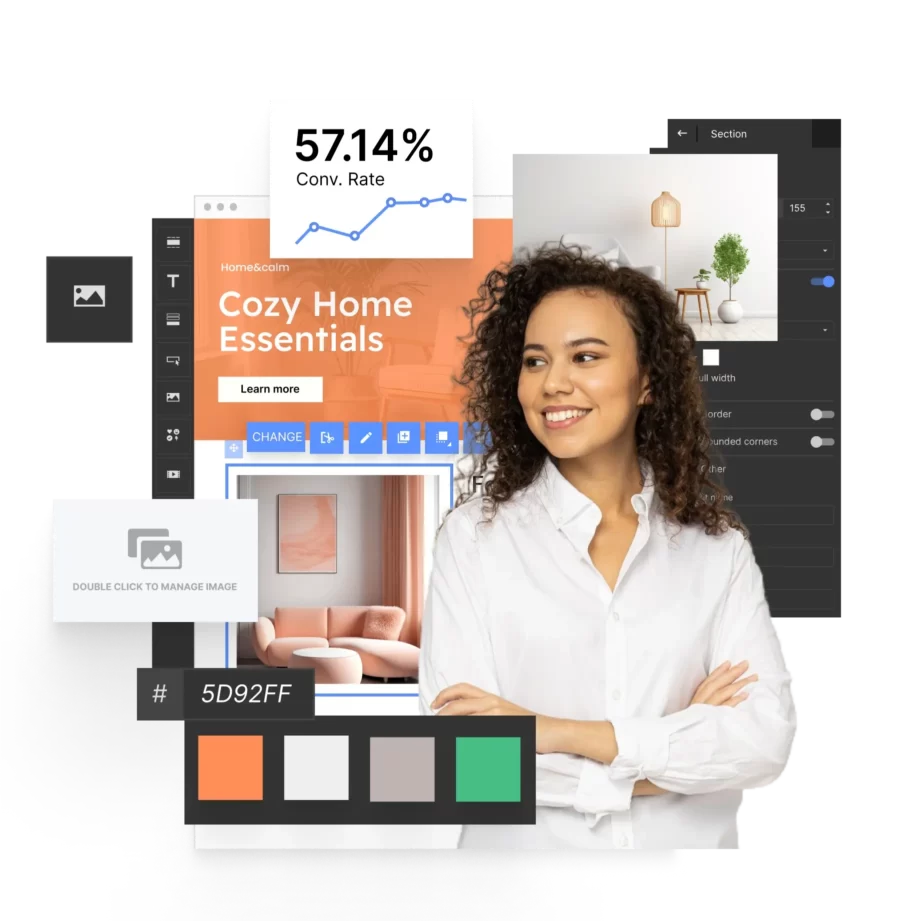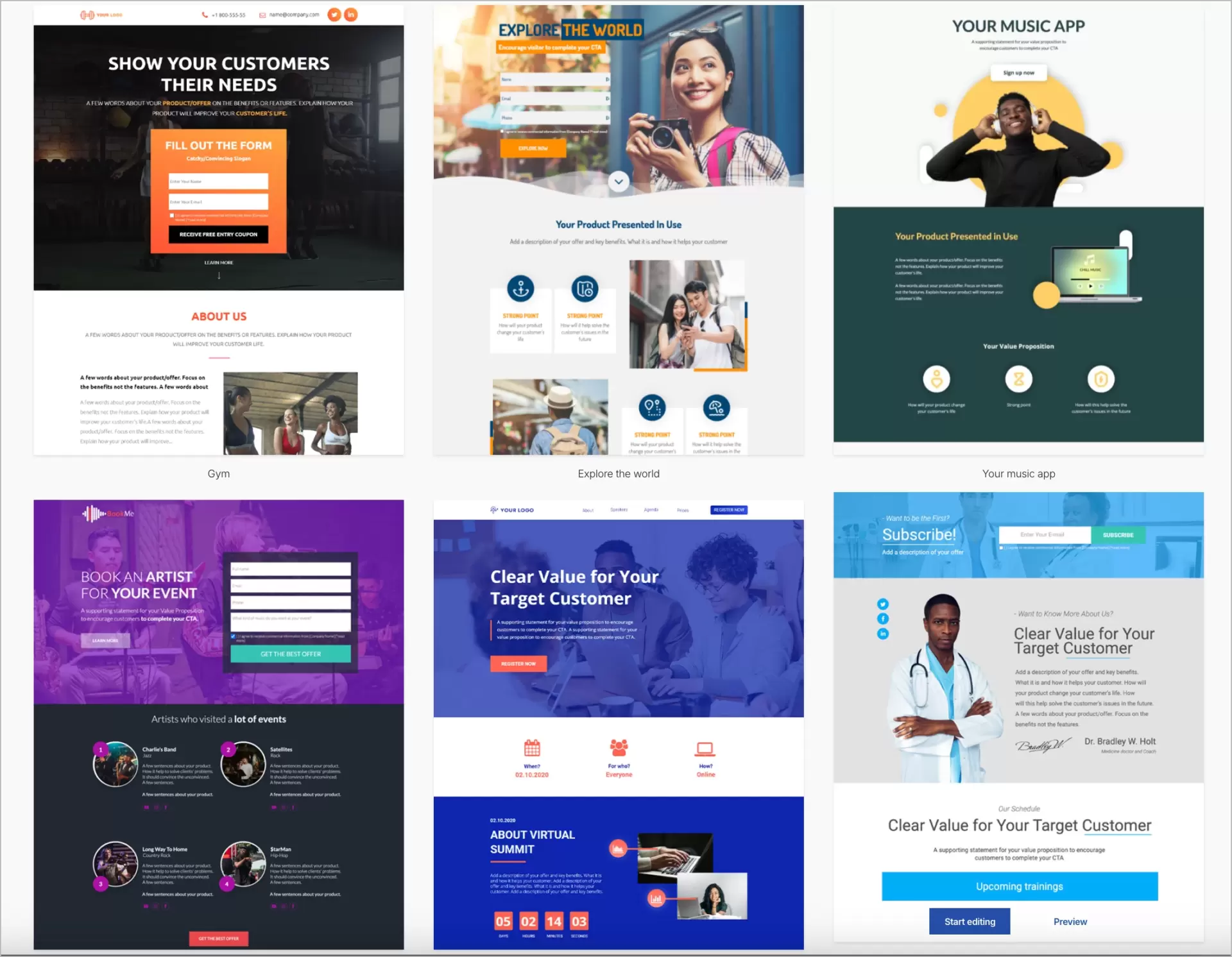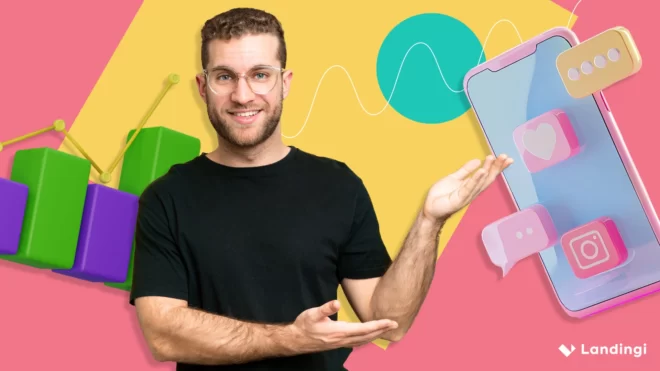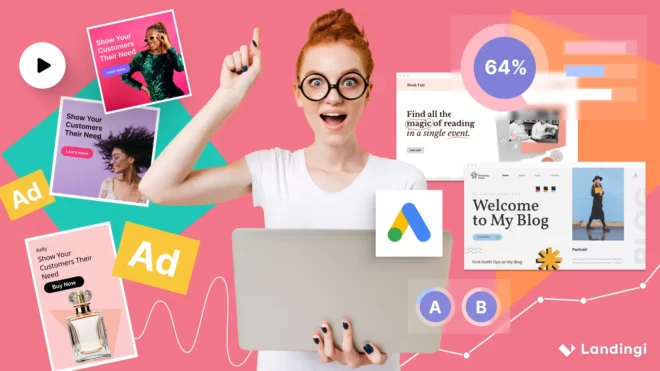Digital marketing optimization (sometimes referred to as internet marketing optimization) is all about improving the efficiency of online marketing channels, such as PPC advertising, social media, email campaigns, SEO, content marketing, etc. While wondering whether all of these activities are worth the effort, money, and time invested, take into account that, according to the Market.us report, digital marketing services are worth globally $415.9 Billion in 2024, with their predicted value in 2033 exceeding $1.3 Trillion! Efficient digital marketing translates to business growth, increases revenue, and is able to give you a competitive edge in the industry, and this is why businesses invest more and more in online campaign optimization.
In this post, I will guide you through this process step by step, from definitions through common measures, the most effective strategies, actionable tips, and the popular apps and platforms (including the best optimization tool to start and practice with – Landingi). For a good start just take a quick look at the digital marketing optimization checklist:
- Set clear goals and KPIs,
- Understand and segment your audience,
- Optimize content for SEO and user intent,
- Leverage A/B testing
- Focus on mobile experience
- Use data analytics and insights
- Implement retargeting and remarketing
- Personalize customer experience
- Optimize landing pages for conversions
- Monitor competitor activity
- Adapt to algorithm changes and trends
- Optimize for voice search and local SEO
- Consistently track and improve performance.
No further ado, let’s get to it!

What is Digital Marketing Optimization?
Digital marketing optimization is the process of improving the performance and effectiveness of digital marketing strategies and campaigns to achieve better results. This involves analyzing data, making adjustments, and implementing best practices across various digital channels to maximize conversions, enhance user experience, and drive more traffic or sales.
The optimization process usually includes:
- improving search engine rankings through SEO,
- refining social media content and advertising,
- enhancing website navigation for better user engagement,
- and optimizing email campaigns for higher open and click-through rates.
Optimizations in these areas are often preceded by A/B testing different elements of campaigns (such as ad copy, landing pages, or email subject lines) and analyzing their performance with professional data-driven tools (like, e.g., Google Analytics or Ahrefs) to identify potential issues and/or development opportunities.
Ultimately, digital marketing optimization aims to ensure that all aspects of digital marketing are as efficient, cost-effective, and impactful as possible, enabling businesses to reach their target audience more effectively and achieve measurable growth in key metrics like website traffic, engagement, and conversions.
Why Is Digital Marketing Optimization Important?
Digital marketing optimization is essential for businesses because it maximizes the effectiveness of marketing campaigns, ensuring a better return on investment. It also allows marketers to analyze and refine strategies based on data and performance metrics, enabling them to make informed, unbiased decisions (hence eliminating guesswork). Finally, well-done optimization helps companies stay competitive in the market as online trends, consumer behaviors, and software algorithms change all the time.
How to Measure Digital Marketing Campaign Performance?
Measuring digital marketing campaign performance is a matter of specific metrics designed to achieve precision and avoid speculation or purely subjective judgments, which typically lead businesses to make uninformed decisions. The most common and useful indexes applied in marketing optimization process, along with their scope, are discussed below.
Return on Investment (ROI)
General digital marketing optimization focuses on increasing ROI (Return on Investement) or ROMI (Return on Marketing Investement). These metrics evaluate the profitability and effectiveness of marketing campaigns by comparing the cost of investment to the generated revenue. They help determine the success of different marketing channels, allocate budgets efficiently, and optimize strategies for higher returns. Tools like Google Analytics, HubSpot, and Facebook Ads Manager are commonly used to track ROI and identify which campaigns yield the best financial results for the business.
Traffic Metrics
Traffic metrics, such as website visits, page views, and session duration, provide insights into the number and behavior of users visiting a website. These metrics reveal how different channels like social media, search engines, or direct visits contribute to overall traffic. A deeper analysis of these data helps in understanding audience preferences and the effectiveness of traffic sources.
Conversion Rate (CR)
Conversion rate measures the percentage of visitors who complete a desired action, like making a purchase or signing up for a newsletter. A high conversion rate indicates that a marketing campaign effectively persuades users to take action. This metric is crucial for evaluating the effectiveness of the campaign in achieving its objectives.
Cost Per Acquisition (CPA)
CPA is the cost associated with acquiring a new customer or lead. By calculating CPA, marketers can determine the efficiency of their campaigns and assess the profitability of customer acquisition strategies. Comparing CPA with the revenue generated allows for a better understanding of the overall return on investment (ROI) of a campaign.
Click-Through Rate (CTR)
CTR is the ratio of users who click on a specific link to the number of total users who view a page, ad, or email. It is an important indicator of how compelling and relevant the ad copy, email subject lines, or website links are to the audience. A high CTR suggests that the content resonates well with viewers, driving them to take further action.
Engagement Metrics
Engagement metrics, such as likes, shares, comments, and time spent on content, help assess how well a campaign interacts with its audience. These measures provide insights into user interest and brand connection, revealing how effectively the campaign messaging engages users on social media, blog or other platforms.
Email Marketing Metrics
Email marketing metrics, including open rate, click-through rate, and conversion rate, indicate how well email campaigns perform. Open rates measure the percentage of recipients who open an email, while click-through rates show how many clicked on links within it. These metrics help in evaluating the effectiveness of email content, design, and targeting.
Lead Generation & Nurturing Metrics
Metrics related to lead generation include the quantity and quality of leads captured through a campaign. Additionally, tracking how leads move through the sales funnel helps understand the efficiency of the lead nurturing process. Customer relationship management (CRM) tools often facilitate this analysis by providing detailed lead and conversion tracking.
Search Engine Optimization (SEO) Performance
SEO metrics focus on organic search performance, including keyword rankings, organic traffic, and backlinks. They reflect how well a campaign performs on search engines and identify opportunities for improvement in website content and structure. Specialized SEO tools like Ahrefs, Moz, and SEMrush are used to monitor these metrics for better search engine visibility.
Revenue Metrics
Revenue-related metrics such as total sales, revenue per customer, and customer lifetime value (CLV) assess the financial outcomes of digital marketing efforts. These measures help in understanding the monetary impact of a campaign and provide insights into long-term profitability, customer retention, and the effectiveness of sales strategies.
Customer Feedback and Surveys
Customer feedback through reviews, ratings, and satisfaction surveys gives a qualitative view of campaign performance. These metrics provide insight into user experience, brand perception, and customer satisfaction, which are critical for understanding the overall impact of digital marketing on the target audience.
10 Digital Marketing Optimization Tips for Improving Ad Performance
Digital marketing optimization improves campaign performance through the application of a series of technical tips and strategy improvements. Paid campaigns are the domain needing the most frequent optimizations as digital advertising algorithms are changing with no stop. Let’s list and shortly discuss the most common and relevant enhancements you should benefit from in this sector.
1. Define and Refine Your Target Audience
Ensure that your ads are being displayed to the most relevant audience by utilizing marketing data segmentation and detailed targeting options. Understanding demographics, behaviors, and interests will lead to better ad placement and higher conversions.
Pro Tip: Use “lookalike audiences” based on your existing customer data to find new users similar to your top converters, improving targeting precision and ROI.
2. Optimize Ad Copy and Headlines
Craft compelling headlines and clear, concise ad copy that speaks to the audience’s needs and interests. Use action-oriented language and value propositions to encourage users to engage with your ad.
Pro Tip: Use numbers and power words (e.g., “Free,” “Now,” “Instant”) in headlines to draw attention and encourage more engagement with your ads.
3. Utilize A/B Testing for Ad Variants
Use A/B testing to identify which ad elements (images, copy, CTA) perform better. Experimenting with different versions helps to understand what resonates best with your audience and increases overall ad performance.
Pro Tip: Test one variable at a time (e.g., the headline or CTA) to isolate which change makes the biggest impact on performance.
4. Leverage Retargeting Campaigns
Use retargeting to engage users who have previously visited your site but didn’t convert. This method helps re-engage potential customers by serving them personalized ads based on their browsing history.
Pro Tip: Create different retargeting ad sets based on user behavior (e.g., cart abandoners vs. homepage visitors) to tailor the message and maximize relevance.
5. Enhance Your Call-to-Action (CTA)
A strong CTA can make a significant impact on ad performance. Use clear and direct language that tells the user exactly what action to take, such as “Buy Now,” “Learn More,” or “Sign Up Today,” to drive conversions.
Pro Tip: Use urgency or scarcity in your CTA (e.g., “Limited Time Offer,” “Only a Few Left”) to motivate immediate action and boost conversions.
6. Implement High-Quality Visuals and Videos
High-quality images and videos grab attention and convey messages quickly. Ensure visuals align with your brand message and appeal to the audience’s preferences to boost engagement and ad effectiveness.
Pro Tip: Make sure your visuals include real-life scenarios of people using your product to create an emotional connection and help potential customers visualize themselves as users.
7. Focus on Mobile Optimization
Given that a large portion of ad traffic comes from mobile users, it’s essential to ensure your ads are mobile-friendly. Optimize for mobile viewing by using shorter copy, easy-to-click buttons, and ensuring that landing pages are responsive.
Pro Tip: Place important elements like CTAs and key messages in the center of the screen or within easy reach for thumb scrolling. This makes it easier for users to interact with your ad while holding their mobile device.
8. Utilize Keyword Targeting and Negative Keywords
Select keywords that align closely with your ad’s message and target audience. Also, use negative keywords to filter out irrelevant traffic, helping to improve the quality of leads and reduce wasted ad spend.
Pro Tip: Focus on long-tail keywords (3 or more words) that are specific to your product or service. These tend to have lower competition and higher conversion rates because they target users with clearer intent.
9. Optimize Landing Pages for Conversion
Ensure that the landing page users reach after clicking on your ad is optimized for conversion. The page should be fast, have a clear message that matches the ad, and contain a simple and compelling CTA to encourage desired actions.
Pro Tip: Don’t rely on your private judgments. Use data-backed digital optimization tools to identify key pain points for users and then improve only strategic areas. You should use A/B testing, heat-map tools (like Hotjar) and user on-page behavior trackers (like EventTracker).
10. Monitor and Adjust Performance Regularly
Regularly analyze key performance indicators (KPIs) like CTR, conversion rate, and cost per click (CPC). Make adjustments based on data insights to improve underperforming ads and allocate budgets more efficiently to high-performing campaigns.
Pro Tip: Use automated rules in your ad platform to pause underperforming ads or increase the budget on top performers without the need for constant manual monitoring.
What Are the Best Practices for Digital Marketing Optimization?
The best practices for optimizing general digital marketing strategy include setting clear objectives, establishing performance measures, understanding the audience, crafting content that really works (not only sounds good), applying up-to-date search engine marketing directives, optimizing for mobile devices and tracking the performance with testing and special apps. Let’s talk a bit more about all of these along with a few additional best practices for digital optimization to guide you through the process and help you achieve better results.
1. Set Clear Goals and KPIs
Establish measurable goals (e.g., increase leads by 20%, reduce CPA by 10%) and select the key performance indicators (KPIs) that will help you track progress. This will allow you to align strategies with overall business objectives and measure success accurately.
2. Understand and Segment Your Audience
Develop customer personas to understand your target audience’s needs, preferences, and behaviors. Use segmentation to tailor messaging, offers, and ads for different audience groups, ensuring your content is relevant and compelling.
Persona Example:
Name: Sarah, “The Wellness Enthusiast”
Demographics: Female, Age 28-35, Lives in a metropolitan area, Income $60k-$80k.
Interests & Goals: Passionate about healthy living, enjoys yoga, values organic products, aims to maintain a balanced lifestyle. Spends time on Instagram and Pinterest for lifestyle tips and shopping.
Challenges: Finds it hard to balance work-life and often looks for quick, healthy meal solutions.
Segmentation Example:
Based on this persona, Sarah can be segmented into different groups for targeted marketing campaigns:
- Behavioral Segment: Target Sarah based on her online behavior – searching for healthy recipes, shopping for organic food, or subscribing to fitness newsletters.
- Psychographic Segment: Tailor messaging for health-conscious individuals who value sustainability and well-being, focusing on the benefits of organic, eco-friendly products.
- Channel Segment: Reach Sarah where she spends most of her time, such as Instagram and Pinterest social media channels, using visually appealing content and influencer partnerships to engage her interest.
This segmentation allows for personalized marketing approaches that directly align with Sarah’s needs and behaviors.
3. Optimize Content for SEO and User Intent
Create content that addresses your audience’s questions and uses keywords naturally throughout. Focus on user intent to ensure that your content matches what users are searching for, which improves SEO performance and helps drive relevant traffic to your website. Here are 5 quick actionable tips to boost your SEO strategy:
- Use long-tail keywords – Include more specific, long-tail keywords in your content that align closely with what your audience searches for (e.g., “best project management software for small teams”). These keywords have lower competition and attract highly targeted traffic.
- Answer common questions with FAQ sections – Add a FAQ section to your content that directly answers common questions your target audience might have. Use tools like AnswerThePublic or Google’s ‘People Also Ask’ feature to identify popular questions related to your topic.
- Implement internal linking – Connect relevant pages on your website through internal links to enhance site navigation, distribute page authority, and help search engines better understand your content hierarchy.
- Optimize meta titles and descriptions – Craft compelling meta titles and descriptions that incorporate primary keywords and convey the content’s value. Keep titles around 60 characters and descriptions around 155 characters to ensure they display properly in search results.
- Use structured data markup – Implement schema markup to provide search engines with additional information about your content. This helps improve the chances of appearing in rich snippets, enhancing click-through rates and visibility.
4. Leverage A/B Testing
Test different versions of your landing pages, ads, email campaigns, and CTAs to see what performs best. A/B testing helps refine your approach by identifying which elements really resonate with your audience and lead to higher conversions.
You may wonder which tools are the most effective. It depends on what you are going to test. Have a look at our four quick recommendations:
- Landingi – best tool for testing Landing Pages, allowing you to experiment with different designs, headlines, and CTAs;
- Mailchimp – best platform for testing Email Campaigns, enabling you to test different email elements like subject lines, content, images, and send times;
- Google Optimize – best software for general testing of Website Content & User Experience, offering experiments with various page elements and layouts and useful integration with Google Analytics;
- Facebook A/B Testing (Ad Experiments) – best tool for testing Social Media Ads (allowing you to test multiple versions of ads by varying factors such as audience targeting, ad creatives, and placements).
5. Focus on Mobile Experience
With mobile traffic surpassing desktop, ensure your website and ads are optimized for mobile devices. This includes responsive design, faster load times, and easy-to-navigate layouts that create a seamless user experience. A very useful function is a mobile view editor for websites, posts, or landing pages. You can use it to adjust mobile versions of your digital assets separately from the desktop one (e.g. you can have two different order of elements on both views or deactivate some elements in the selected view). Here is how such a tool can look like (screenshot from Landingi editor):

6. Use Data Analytics and Insights
Regularly analyze data and ad performance reports. Use collected valuable insights to identify which campaigns, keywords, or ad groups are most effective and where adjustments can be made for better performance. The best tracking tools and the list of the most relevant metrics you should track are as follows:
Google Analytics – best tool for tracking Website Traffic and User Behavior, providing detailed insights on visitors, bounce rates, user flow, and overall site engagement;
Facebook Insights (Meta Business Suite) – best platform for monitoring Social Media Engagement and Performance, allowing you to measure likes, shares, comments, and ad performance to optimize social media strategies;
SEMrush – best tool for tracking Keyword Rankings and Organic Traffic, offering comprehensive analysis of keyword positioning, organic search visibility, and backlink performance;
Mailchimp – best platform for analyzing Email Campaign Performance, enabling you to track open rates, click-through rates (CTR), and conversions to improve email marketing tactics;
Google Ads – best tool for assessing Paid Advertising ROI and Cost Per Click (CPC), offering detailed metrics on ad spend, conversions, and overall return on investment for paid campaigns;
Hotjar – best software for Conversion Rate and Funnel Analysis, providing heatmaps, session recordings, and in-depth funnel analytics to optimize the user journey and boost conversions.
7. Implement Retargeting and Remarketing
Engage users who have already shown interest in your products or services by using retargeting campaigns. These ads, which target people based on their previous interactions with your website or ads, are highly effective for improving conversions.
8. Personalize Customer Experience
Use data to personalize your messaging, offers, and experiences for users. Every customer has unique preferences and needs. Using insights from user data lets you create more compelling and meaningful interactions. Personalized marketing (e.g., tailored email recommendations or customized ad copy) tends to perform better than generic content and increases user engagement.
Pay particular attention to digital media optimization, as images, videos, animations, and icons are often decision triggers for actions like signing up, purchasing, or sending a form. If they help the user better understand your offer and evaluate whether it fits their needs, they’re more likely to take the desired action (of course, only if the answer is “yes”).
9. Optimize Landing Pages for Conversions
Ensure your landing pages are designed to convert visitors effectively. This includes having strong headlines, concise and persuasive copy, prominent CTAs, and easy navigation, all aligned with the message of the ad that brought users there. If you aren’t familiar with UX and design principles, you may simply use the landing page templates and only replace the content (copy, images, video content, etc.) with your own. Templates are usually designed by professionals with an eye on appropriate structure and highlighting crucial elements (headlines, CTA, forms).
Explore Landingi’s templates gallery with 300+ kits for various industries and different digital marketing purposes.

Once you have a landing page and use it in real campaigns, you may also perfect individual elements based on data collected through different digital marketing optimization tools (especially ones for analytics and testing).
10. Monitor Competitor Activity
Keep an eye on your competitors to understand what strategies they are using, which keywords they rank for, and how their ads are performing. Use tools like SEMrush or Ahrefs to gain insights and find opportunities to differentiate your campaigns.
If you are a stranger to the idea of competitor analysis, you may start with free digital marketing services, such as SimilarWeb (which offers a free version to analyze website traffic sources, top pages, and audience interests), Ubersuggest (where you can explore competitor keywords, backlink data, and top-performing content without a paid subscription), or Moz’s Free Domain Analysis tool (which provides an overview of domain authority, top pages, and key linking domains of your competitors).
11. Adapt to Algorithm Changes and Trends
Digital platforms frequently update their algorithms, affecting how ads are delivered and content is ranked. Stay up-to-date with these changes, adapt your strategies as necessary, and be ready to implement trending formats like video, stories, or influencer collaborations.
Did you know that the Google search engine’s algorithm alone underwent 7 updates in 2023-2024!? All of these updates posed new challenges to companies competing in SEPRs, enabling a need for immediate adjustments.
12. Optimize for Voice Search and Local SEO
With the rise of voice search and mobile searches for local businesses, optimizing your content for voice queries and including local keywords can improve visibility. Ensure your business is listed in local directories and platforms like Google My Business.
13. Consistently Track and Improve Performance
Continuously track performance metrics like CTR, conversion rate, CPA, and ROI. Regularly optimize underperforming campaigns, ad groups, or keywords, and allocate more budget to top performers to maximize efficiency.
What is the Best Digital Marketing Optimization Tool?
The best digital marketing optimization tool, known for its versatility across various optimization needs, is SEMrush. SEMrush is highly regarded for its comprehensive features that support all aspects of digital marketing, including SEO, PPC, social media management, content marketing, competitive analysis, and more.
Its versatility allows users to conduct keyword research, analyze backlinks, track website performance, and optimize content based on user intent and search trends. Additionally, it provides insights into competitor strategies, making it a powerful tool for both beginners and experienced marketers looking to improve various elements of their digital presence.
How Often Should You Review and Optimize Your Digital Marketing Campaigns?
You should review and optimize your digital marketing campaigns regularly, with the frequency depending on the campaign type and platform. For paid campaigns like PPC or social media ads, weekly or bi-weekly reviews are essential to ensure that performance metrics like click-through rates (CTR), conversions, and costs are on track. For content-based strategies, such as SEO or email marketing, a monthly review may be more appropriate to allow time for data collection and meaningful trend analysis. Additionally, quarterly deep-dive evaluations are recommended for a broader view of overall campaign performance, strategy adjustments, and identifying long-term opportunities.
In general, the more volatile the campaign (e.g., new ads, trending topics), the more frequent the review should be to make quick adjustments and optimize results.
What Metrics Should Be Tracked for Digital Marketing Optimization?
Which indexes to track depends on your marketing strategy and the channels you use, but measures such as conversion rate and return on investment are important in almost every case. Let’s list and briefly present the most popular and useful optimization metrics implemented by business companies and marketing teams:
- Traffic Sources & Volume are monitored to identify the origins of website traffic, whether from organic searches, paid ads, social media, or referral sites. Understanding these sources helps to determine which channels are driving the most visitors and can inform channel-specific strategies.
- Click-Through Rate (CTR) is a metric indicating the percentage of users who click on ads, email links, or calls-to-action. This rate provides insight into the effectiveness of ads and content, as a higher CTR suggests more engaging or compelling messaging.
- Conversion Rate measures the proportion of visitors who complete a specified action, such as making a purchase or signing up for a newsletter. Tracking this rate allows for the assessment of how well campaigns and landing pages are converting traffic into leads or customers.
- Cost Per Acquisition (CPA) assesses the cost involved in acquiring a new customer. It is a crucial measure for determining the efficiency and profitability of digital marketing efforts and helps in budget allocation for various campaigns.
- Return on Investment (ROI) is calculated by comparing the revenue generated from marketing activities to the costs incurred. This metric provides a clear indication of the overall profitability and success of digital campaigns.
- Customer Lifetime Value (CLV) estimates the total value a customer is expected to bring over the duration of their relationship with a business. It provides insights into long-term profitability and assists in determining how much can be spent on acquiring and retaining customers.
- Bounce Rate tracks the percentage of visitors who leave a website after viewing just one page. A high bounce rate may indicate issues with user experience, content relevance, or page load time, signaling potential areas for optimization.
- Engagement Metrics include data on likes, shares, comments, and time spent on content across social media marketing channels and websites. These metrics gauge the level of interaction and connection audiences have with the brand’s content.
- Email Open & Click Rates are used to analyze the performance of email marketing campaigns. Open rates show the percentage of recipients who open the email, while click rates indicate how many engage with the email’s content by clicking through to the website.
- Social Media Reach & Impressions measure the number of users who view social media content and how often it is seen. These metrics help understand content visibility and assess the potential reach of social campaigns.
How does Digital Marketing Optimization Improve the Conversion Rates of a Landing Page?
Digital marketing optimization allows you to determine, based on data, which landing page elements need refinement to improve conversion rates. By using analytics tools like Google Analytics, heatmaps, and user session recordings, you can track user behavior, identify points of friction, and understand which elements are not performing as expected. For example, if you notice that users frequently leave the page without clicking the CTA, it might indicate a problem with the CTA’s design, placement, or messaging. Tracking metrics like bounce rate, click-through rate, and form completion rates can help pinpoint the exact issues to address.
After identifying these problem areas, it’s good to prioritize changes that will have the highest impact on conversions. It’s important to A/B test specific elements such as headlines, CTAs, or page layout to see which variation drives better results. This approach allows for focused improvements and ensures that optimizations lead to measurable enhancements in user engagement and conversions.
What Are the Limitations of Digital Marketing Optimization?
Digital marketing optimization is limited by constant changes in algorithms, user behavior, and market trends that make it challenging to maintain consistent results. The optimization process requires ongoing testing and adjustments, which can be time-consuming and resource-intensive. Additionally, over-optimization for metrics like SEO or paid ads can sometimes lead to diminishing returns, where the focus on fine-tuning individual elements overshadows the overall user experience or business goals. Finally, data privacy regulations and changes, such as the phasing out of third-party cookies, limit the ability to accurately track and personalize user experiences, reducing the effectiveness of certain optimization strategies.
Anyway, optimization has many more advantages than drawbacks. Some of the latter may easily be resolved if the optimization process is performed carefully, with best practices in mind.
Optimize Your Digital Marketing Campaign with Landingi
You’ve got it – the most essential digital marketing optimization techniques in 2024! If you are hungry for more and want to get deeper into the subject, there is no better way than gaining some hands-on experience.
Landingi can serve as a perfect starting point as it mixes versatility with a super-easy interface and navigation designed for digital marketing rookies too. In the platform you can:
- create landing pages, one-pagers, pop-ups, forms and other digital assets,
- A/B test them with a professional built-in testing console to determine which optimizations are most reasonable,
- analyze them with data collected through integrated analytics (EventTracker) to verify whether applied changes bring you the expected results,
- generate and enhance content with AI and multilingual translations,
- and much more.
Start a free trial and let your optimization skills grow through practical application.






